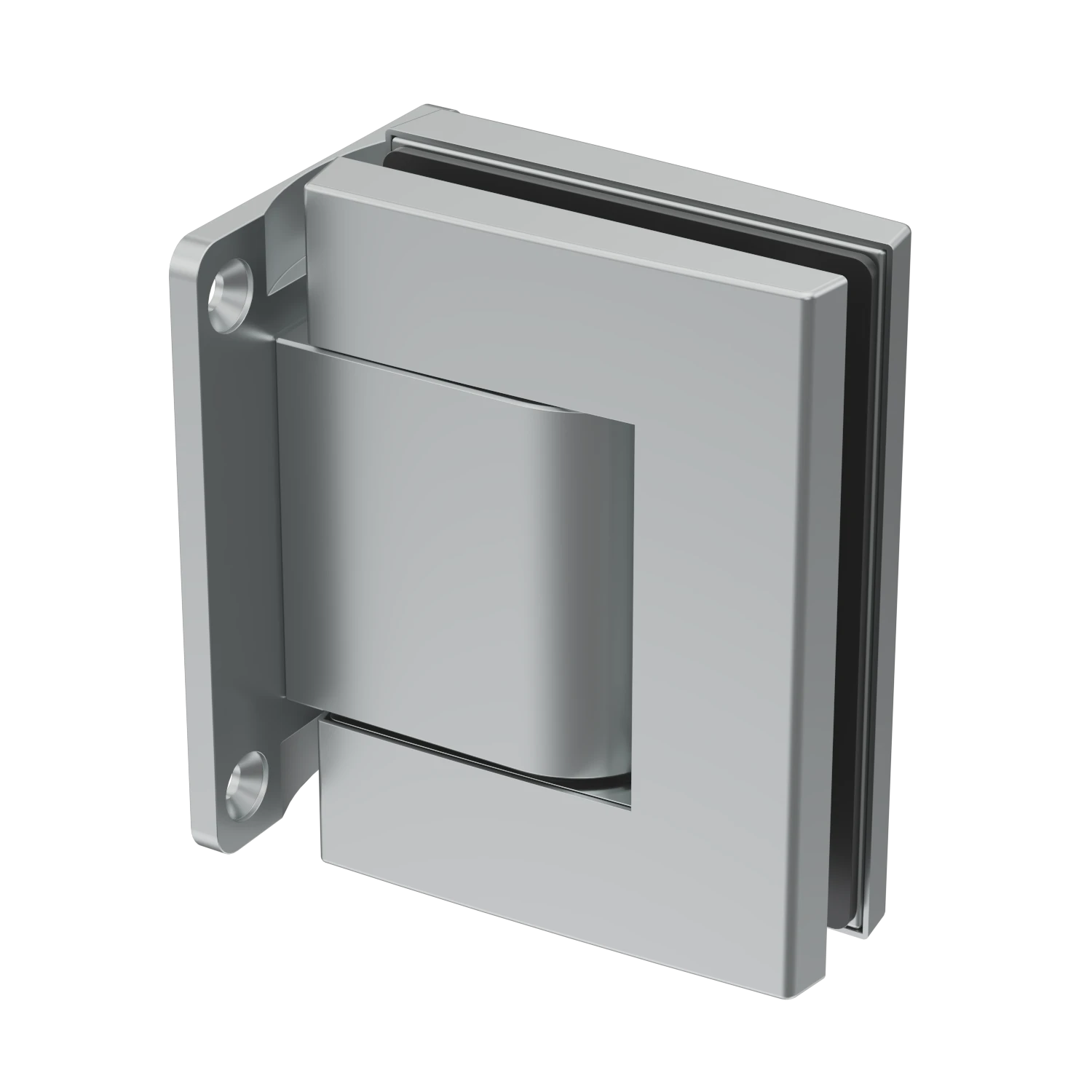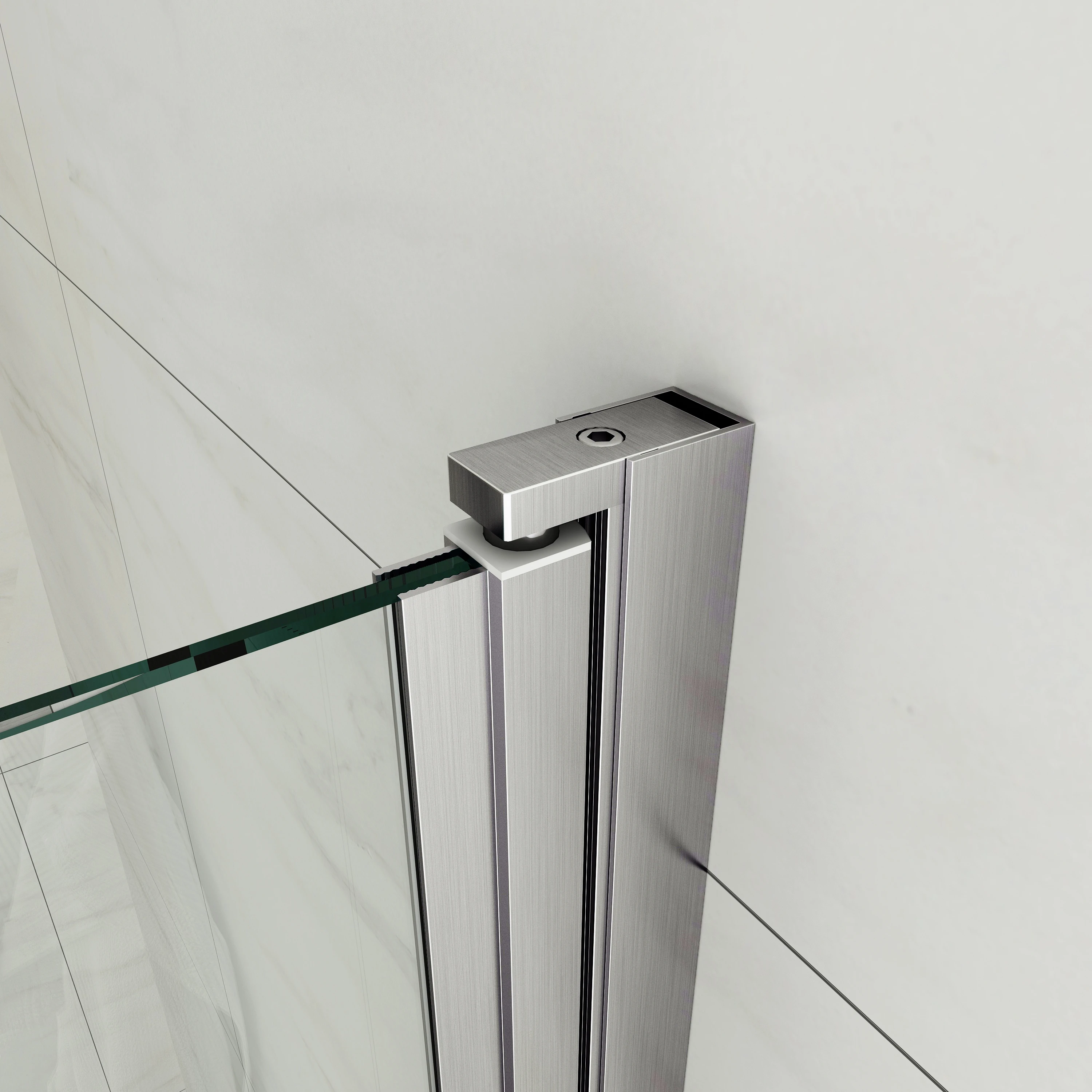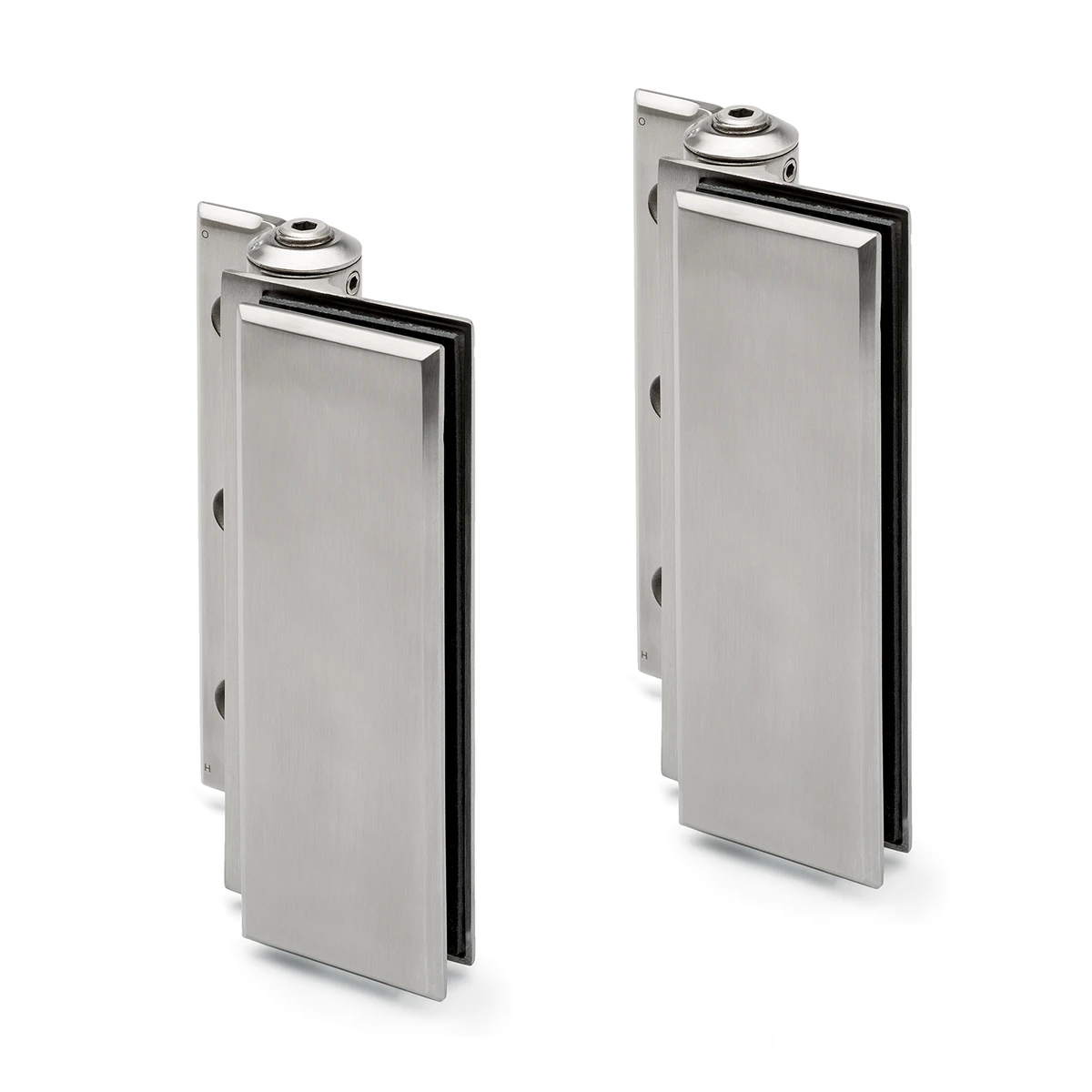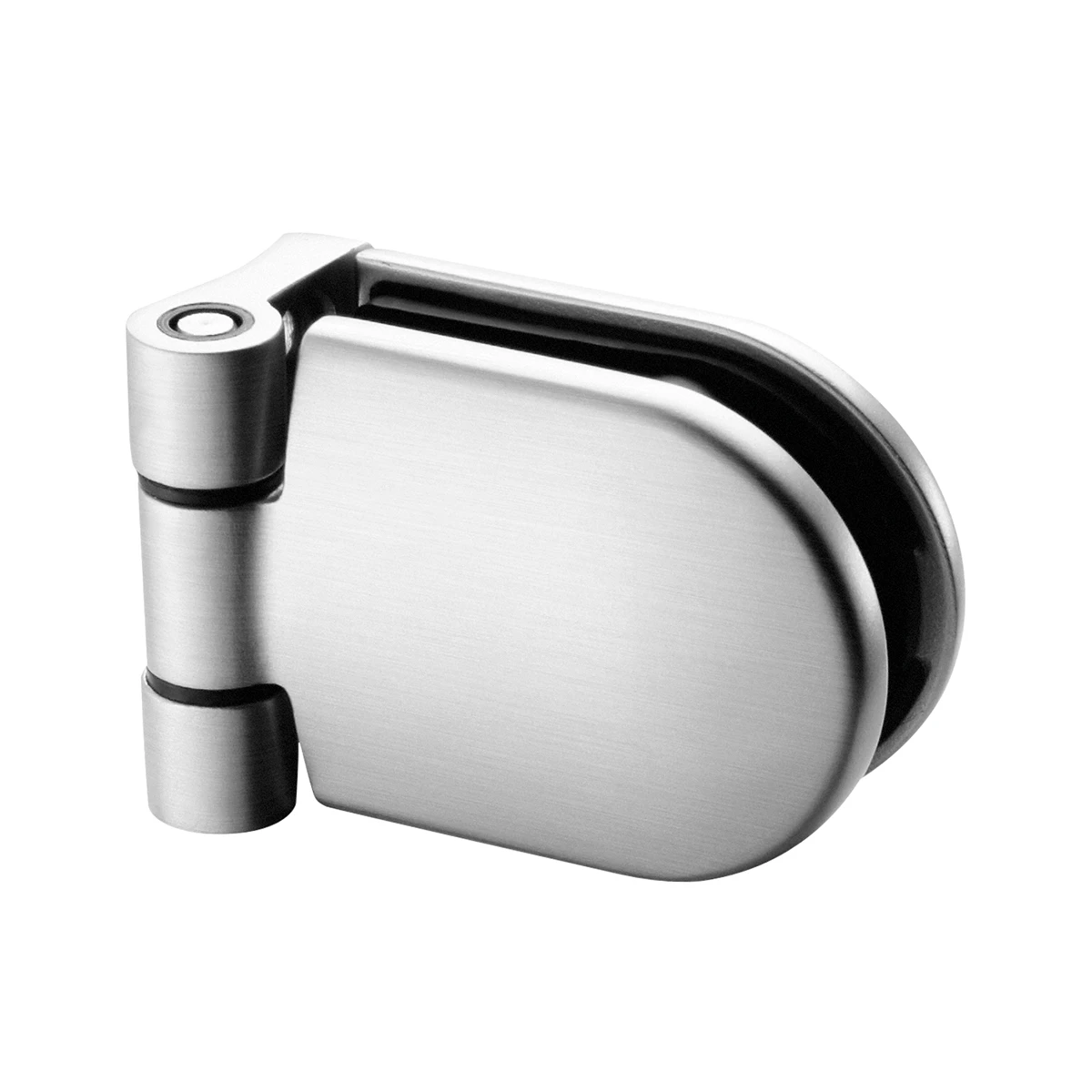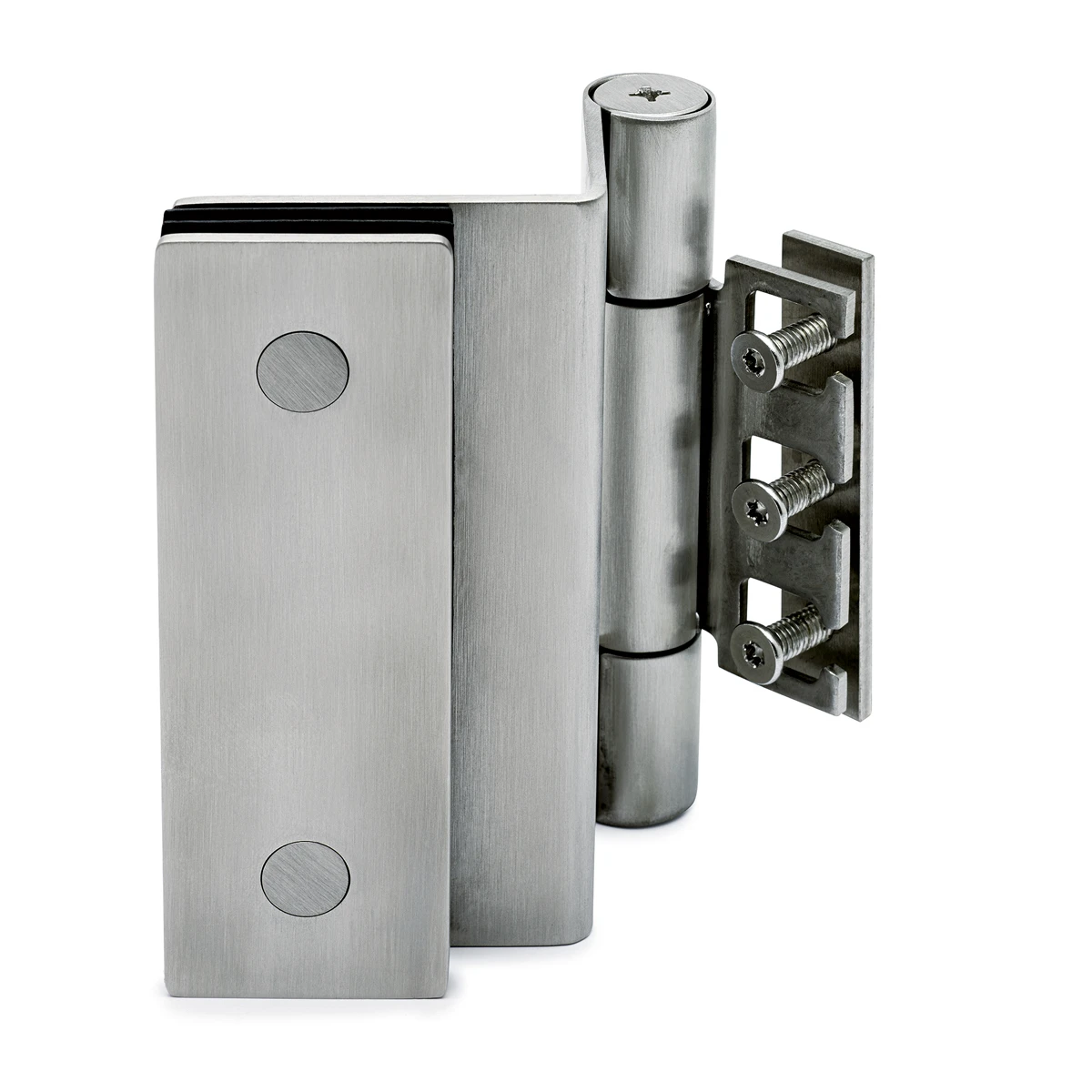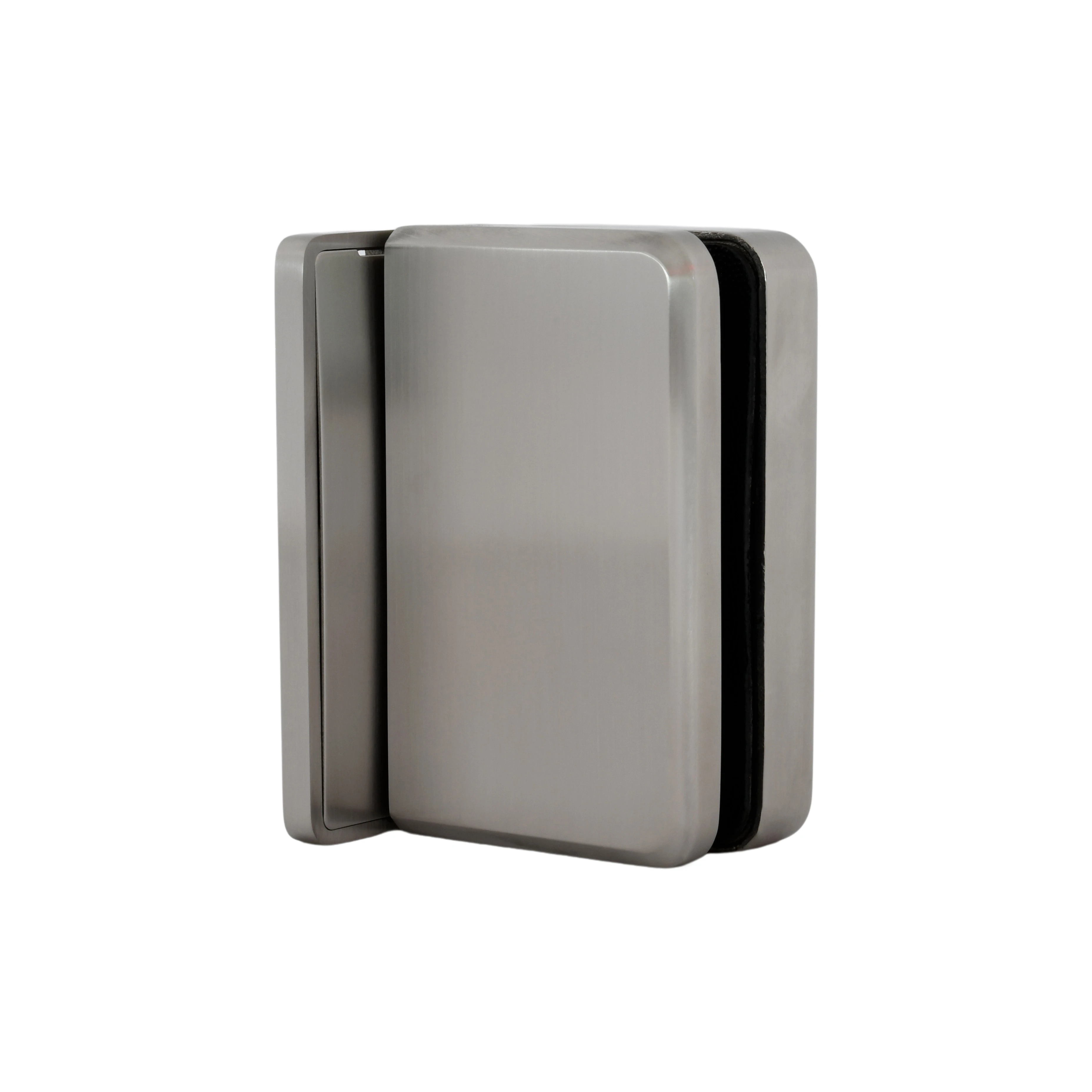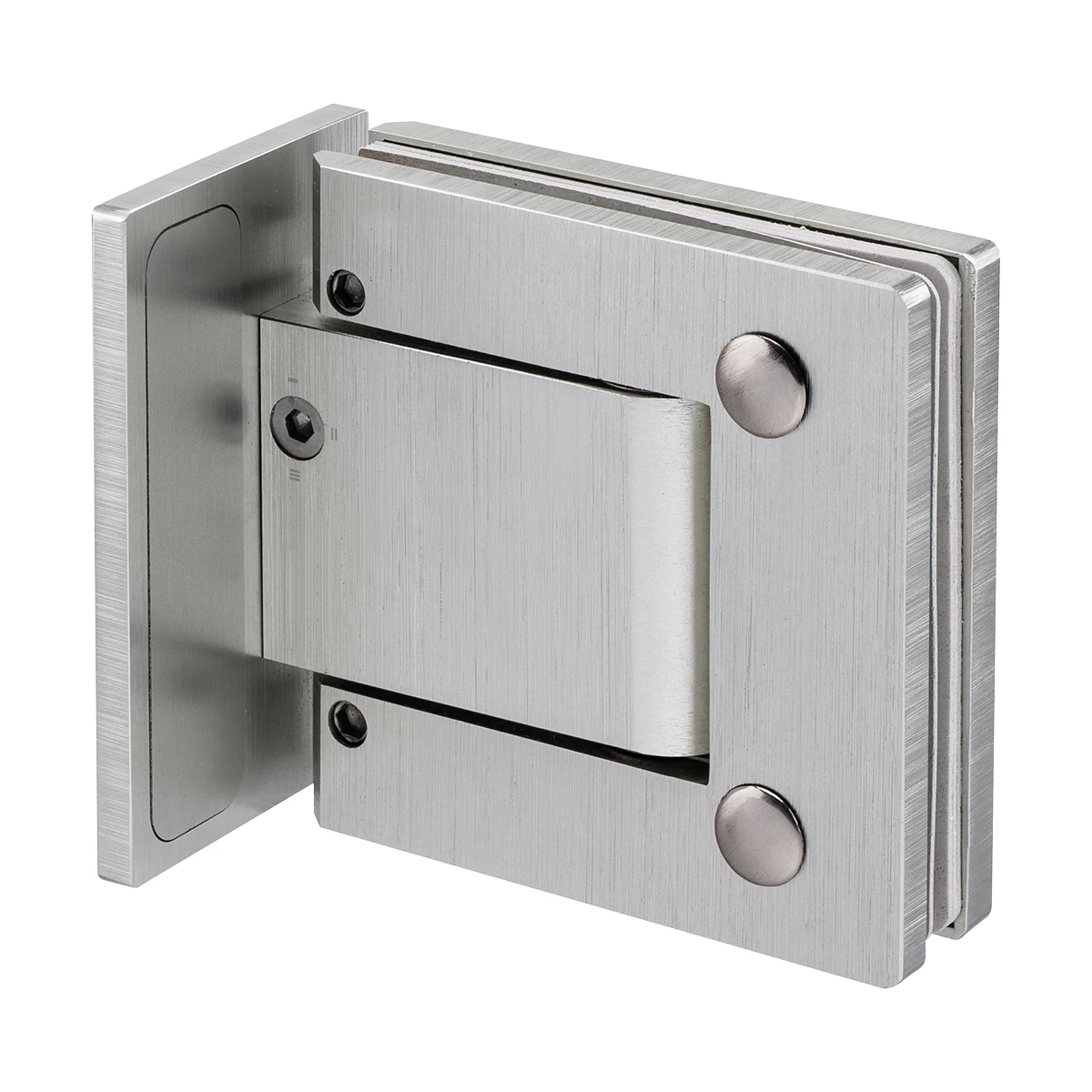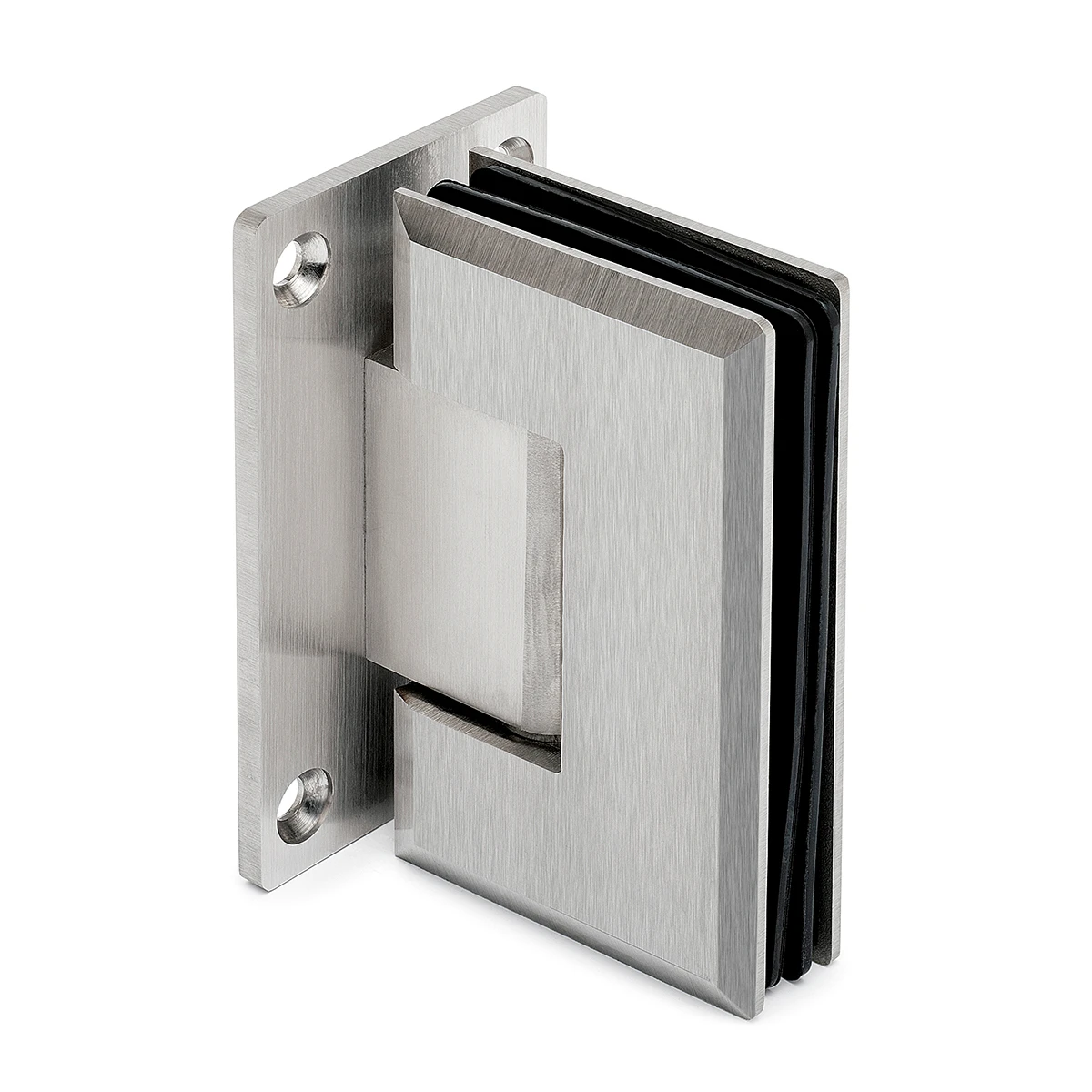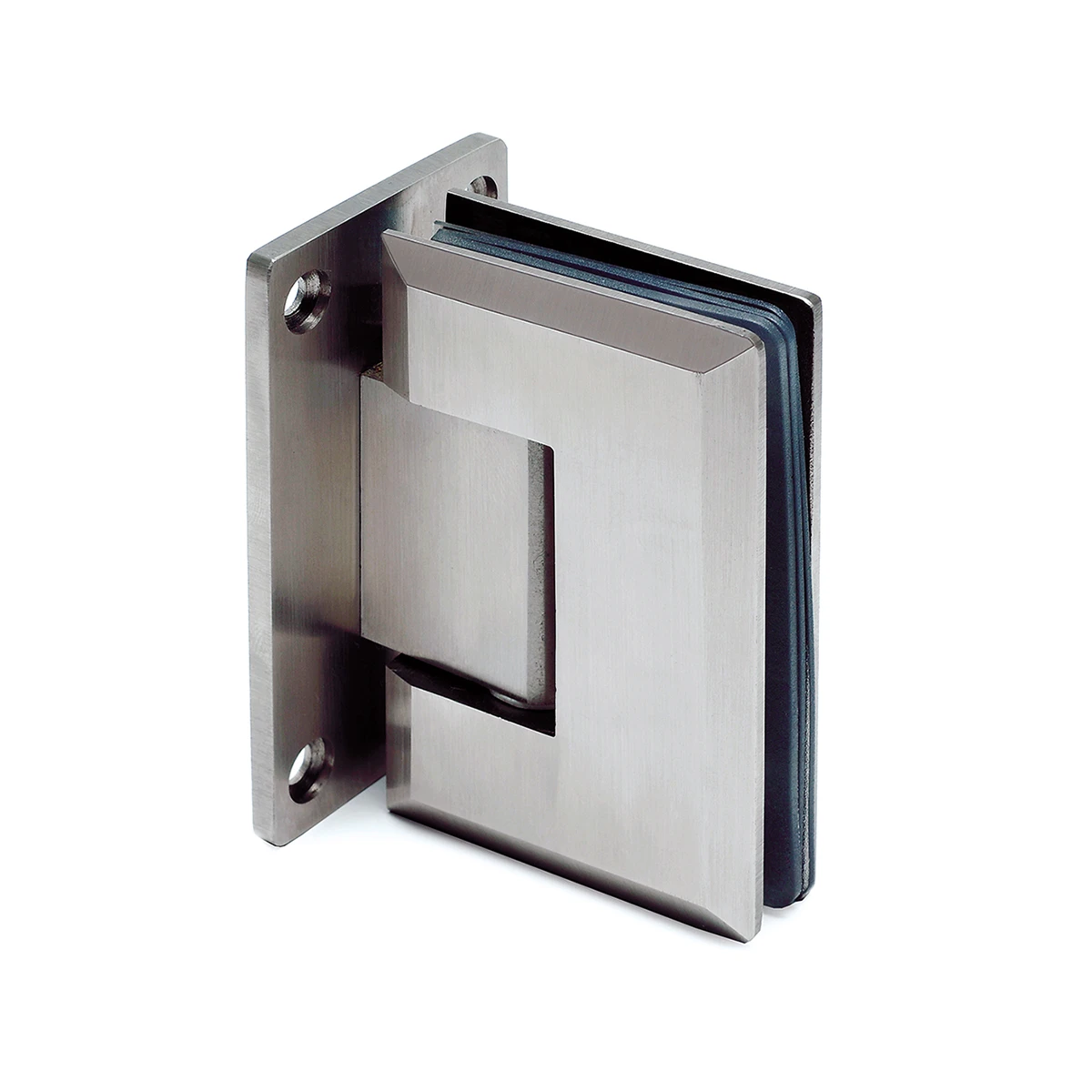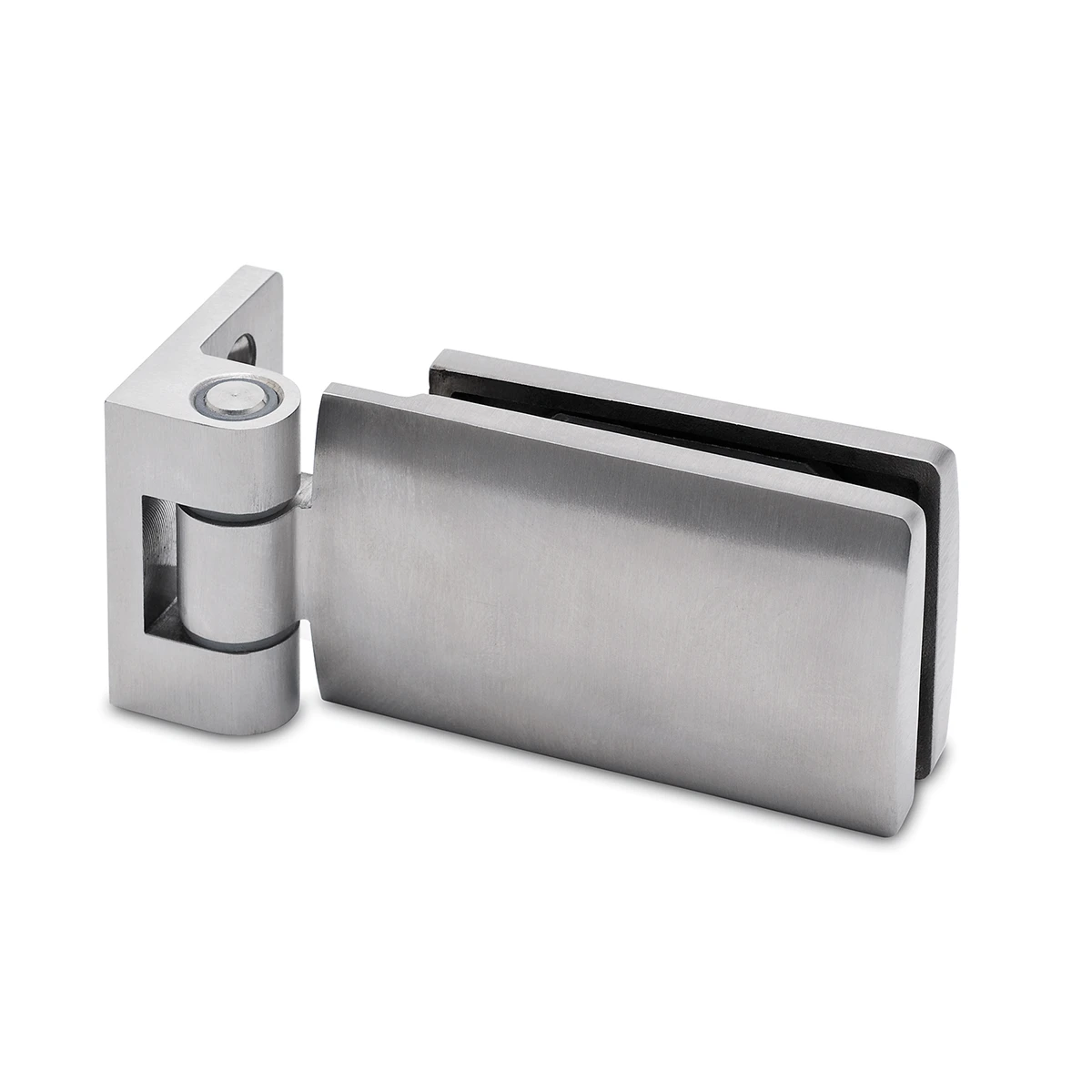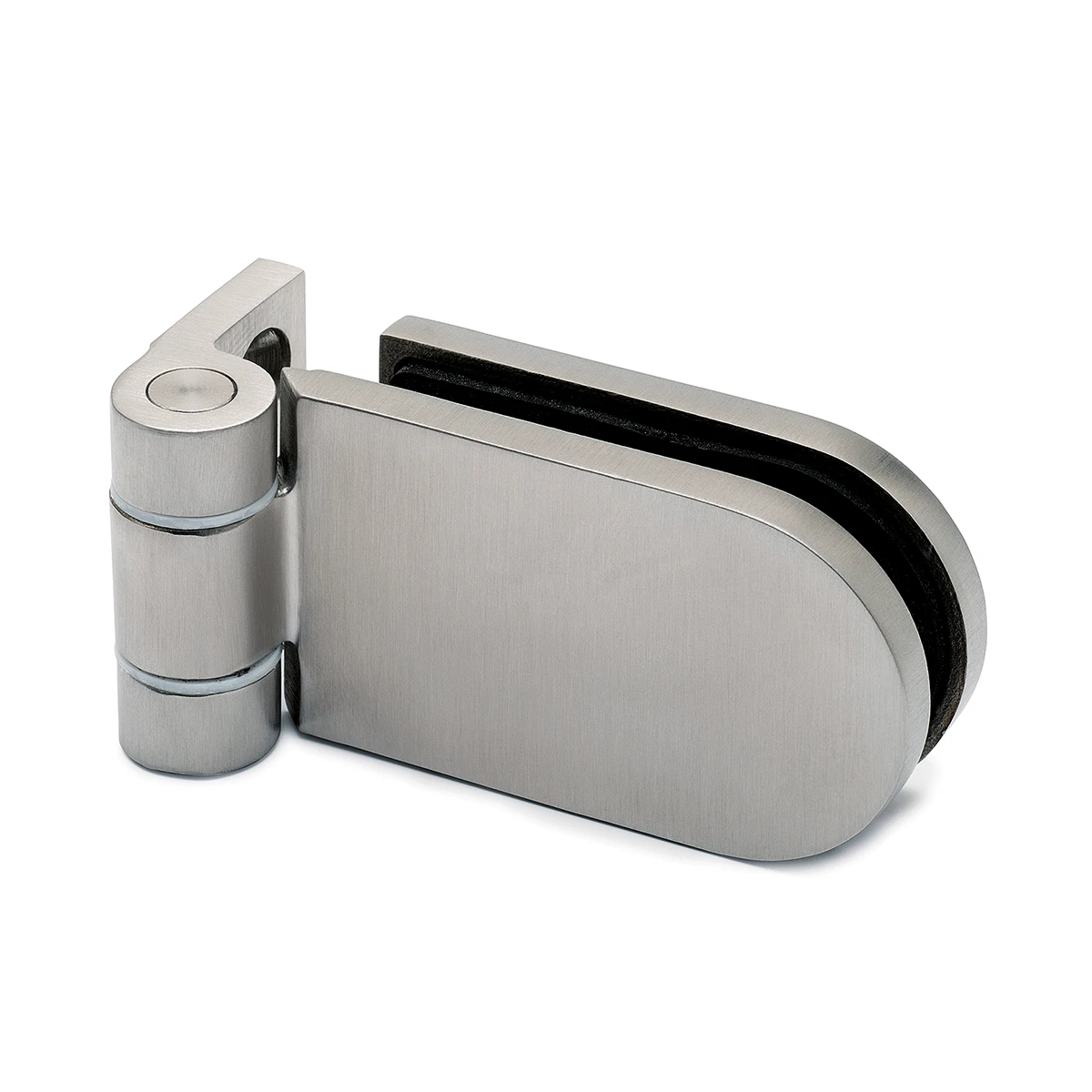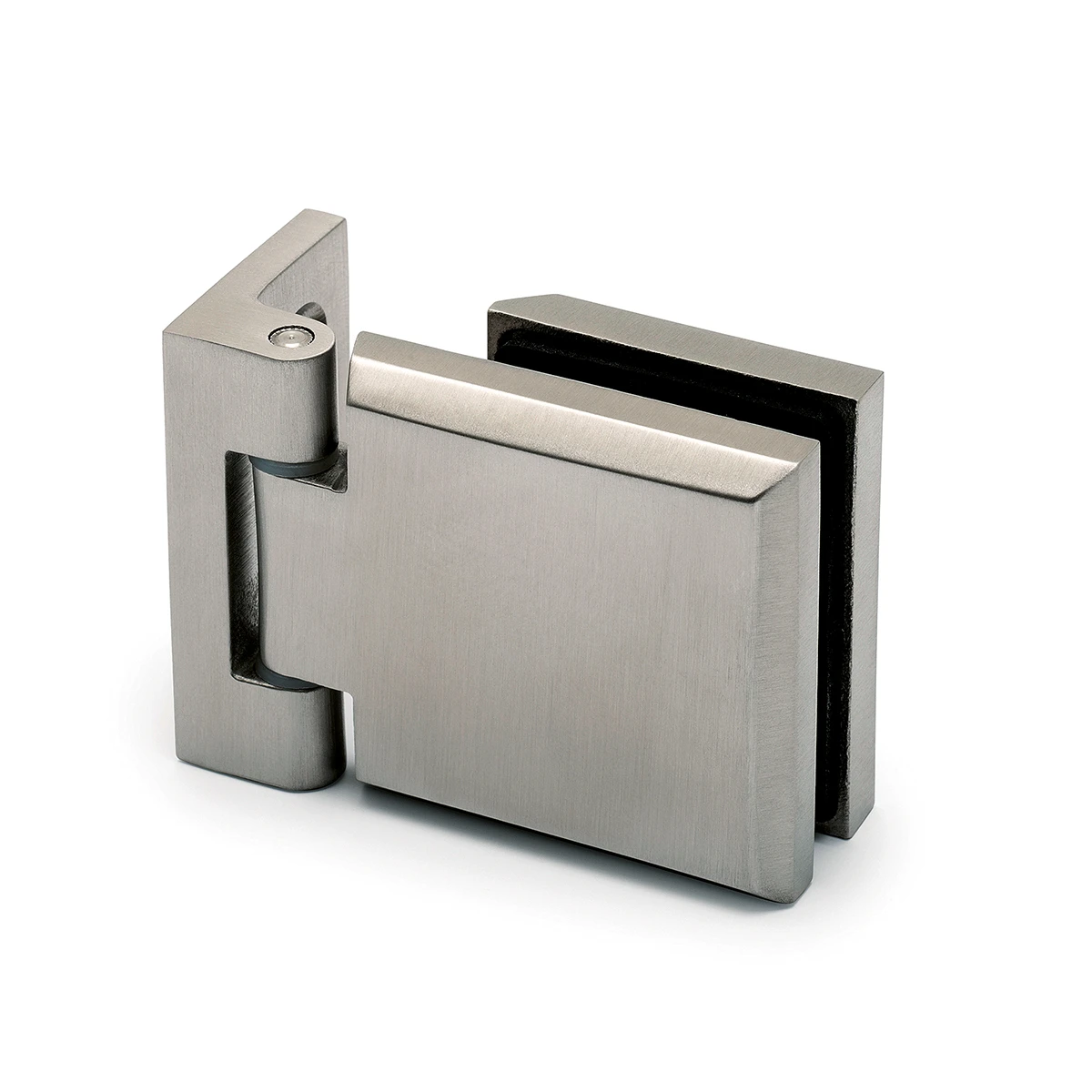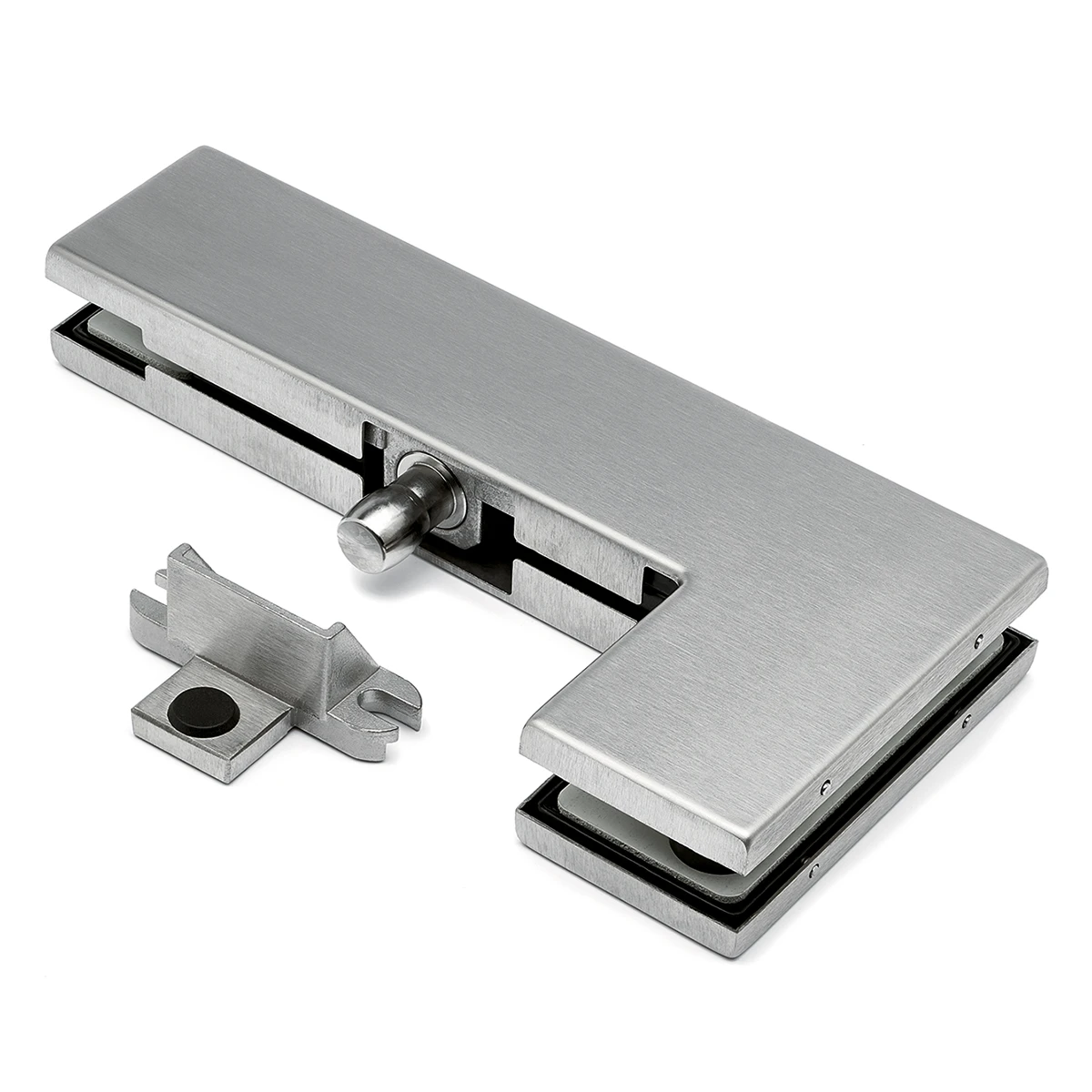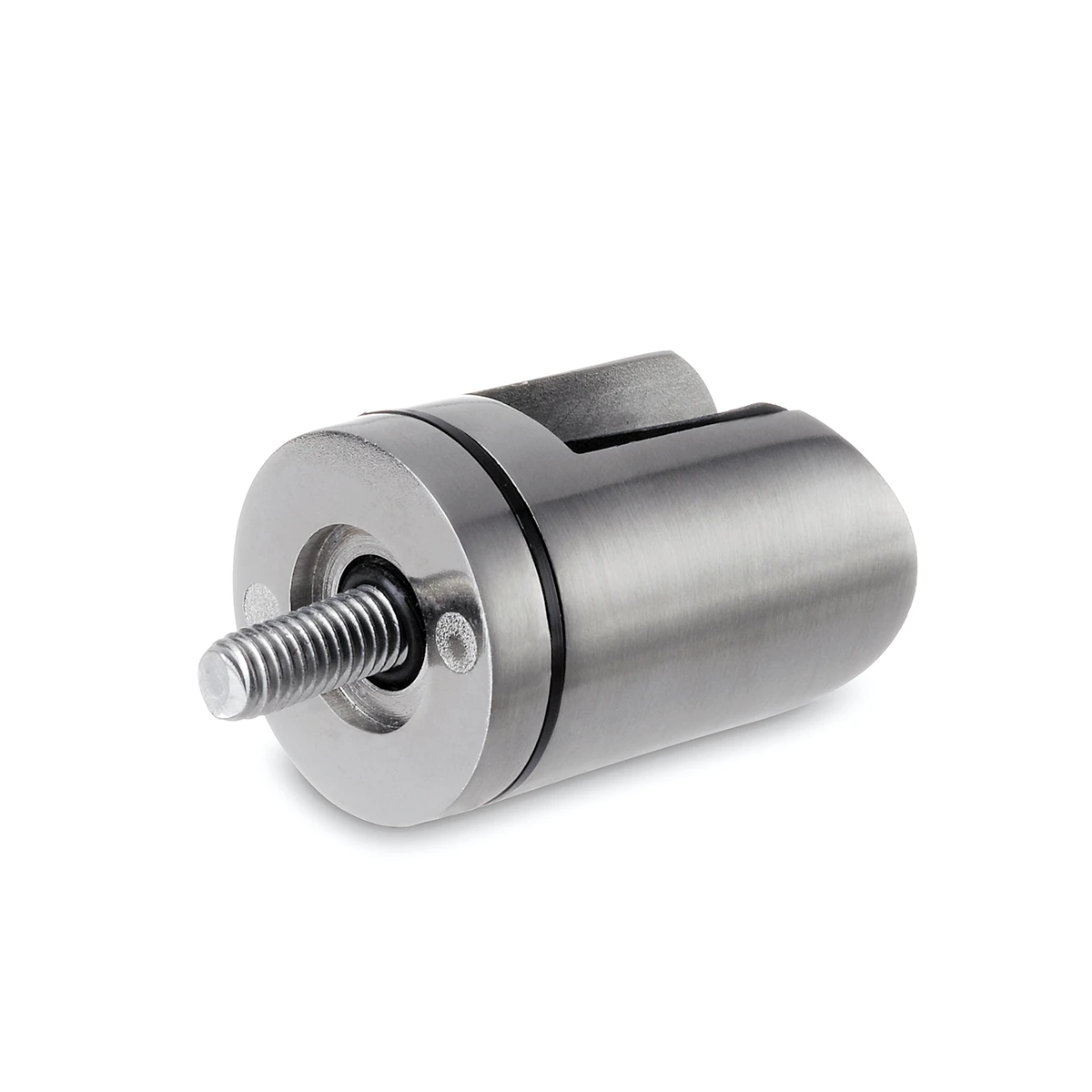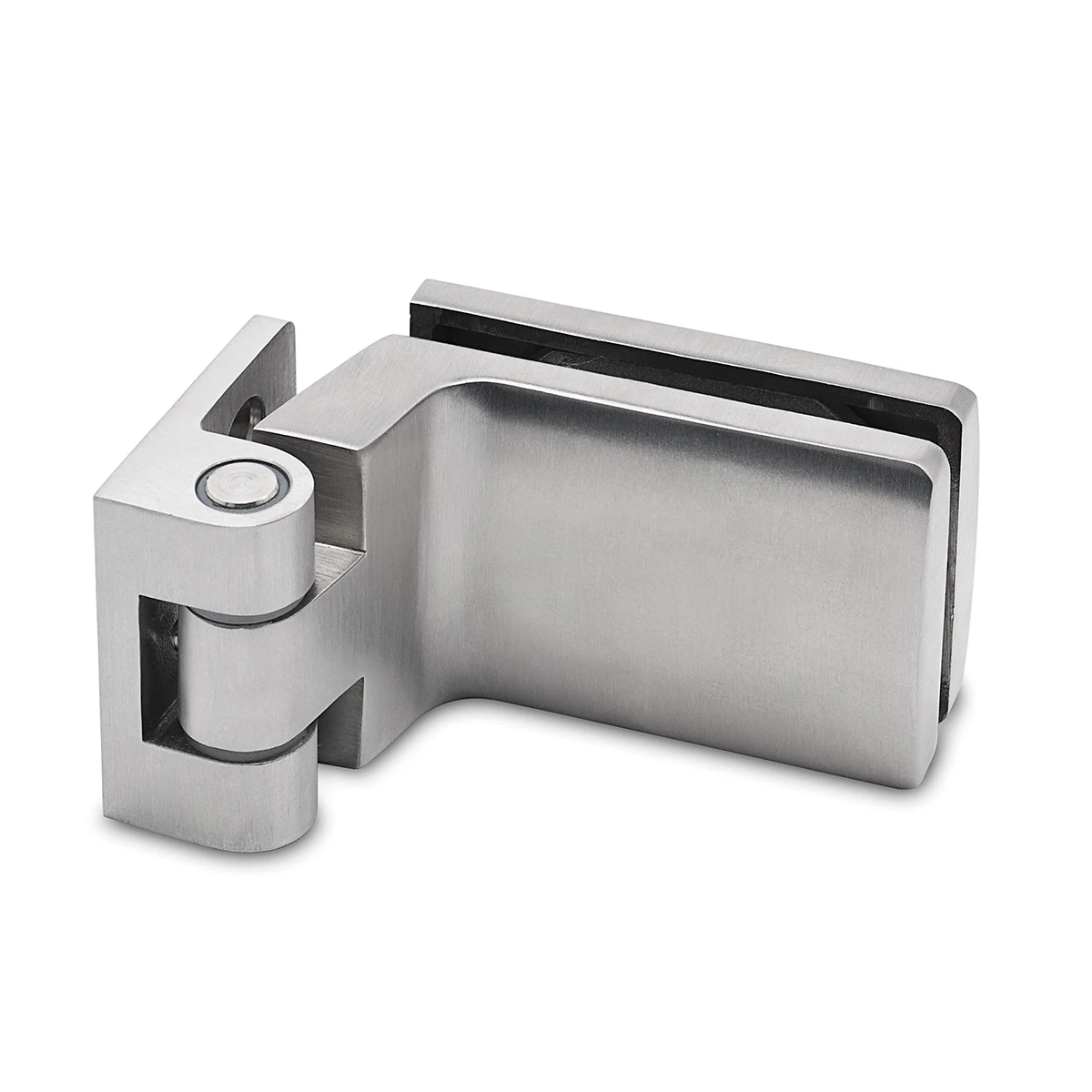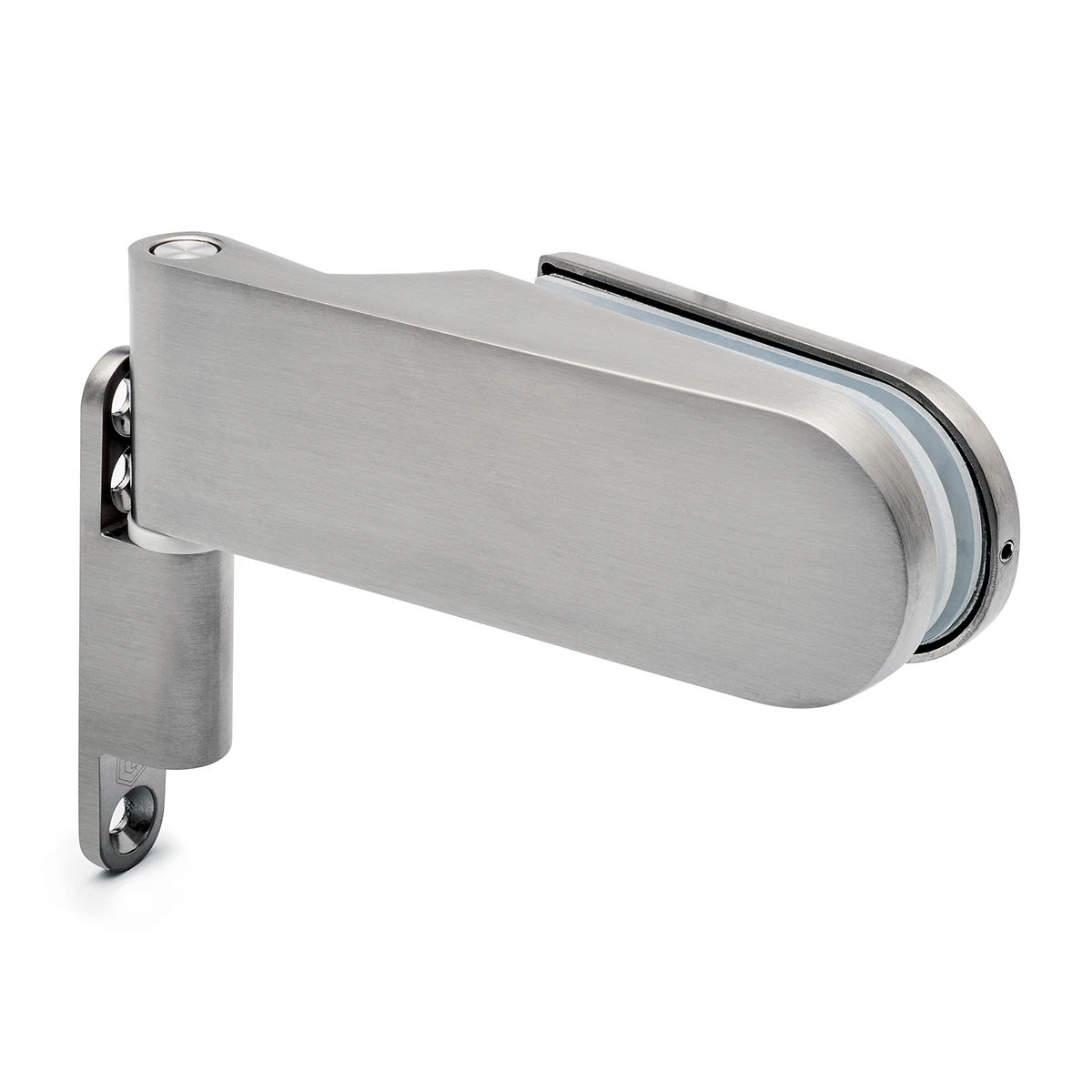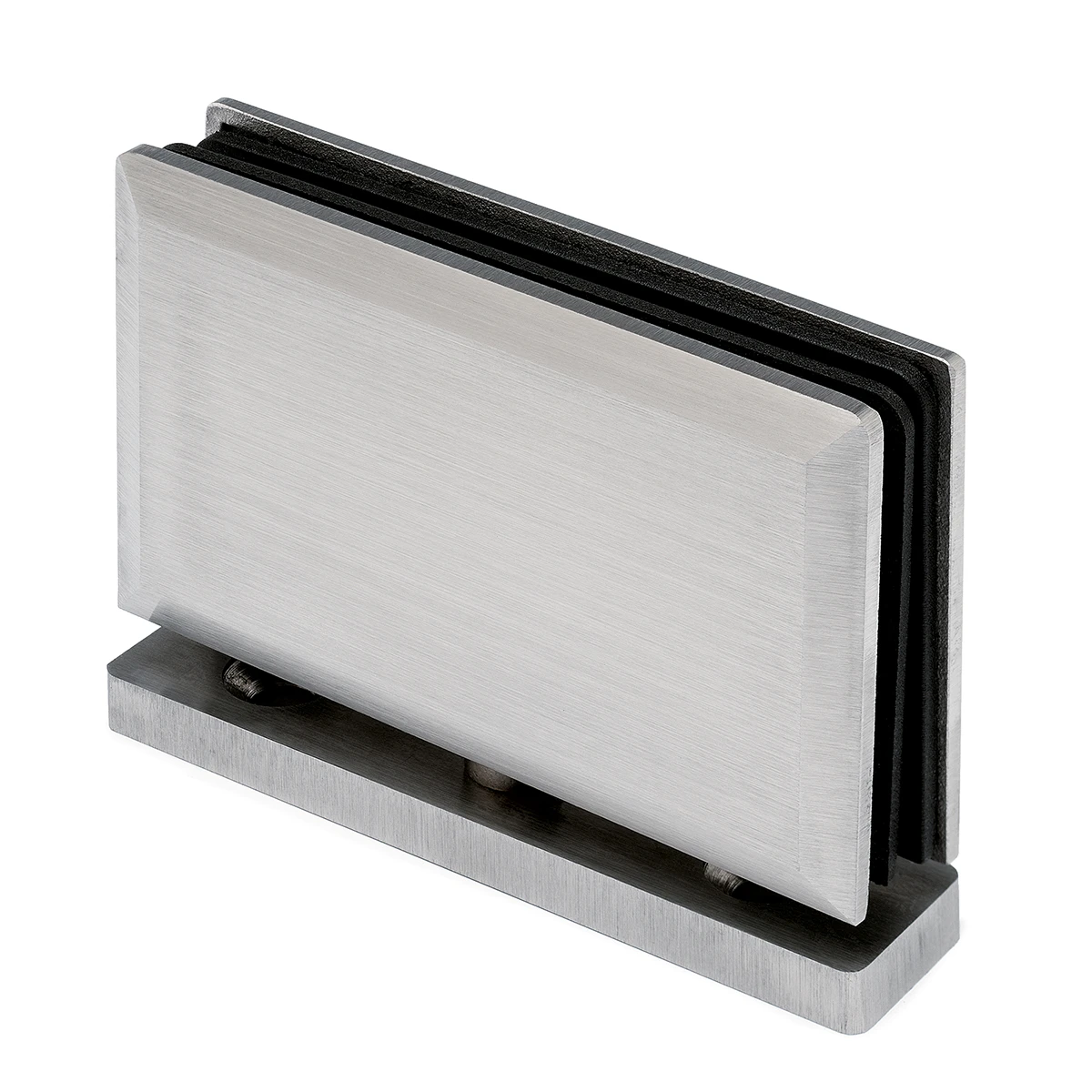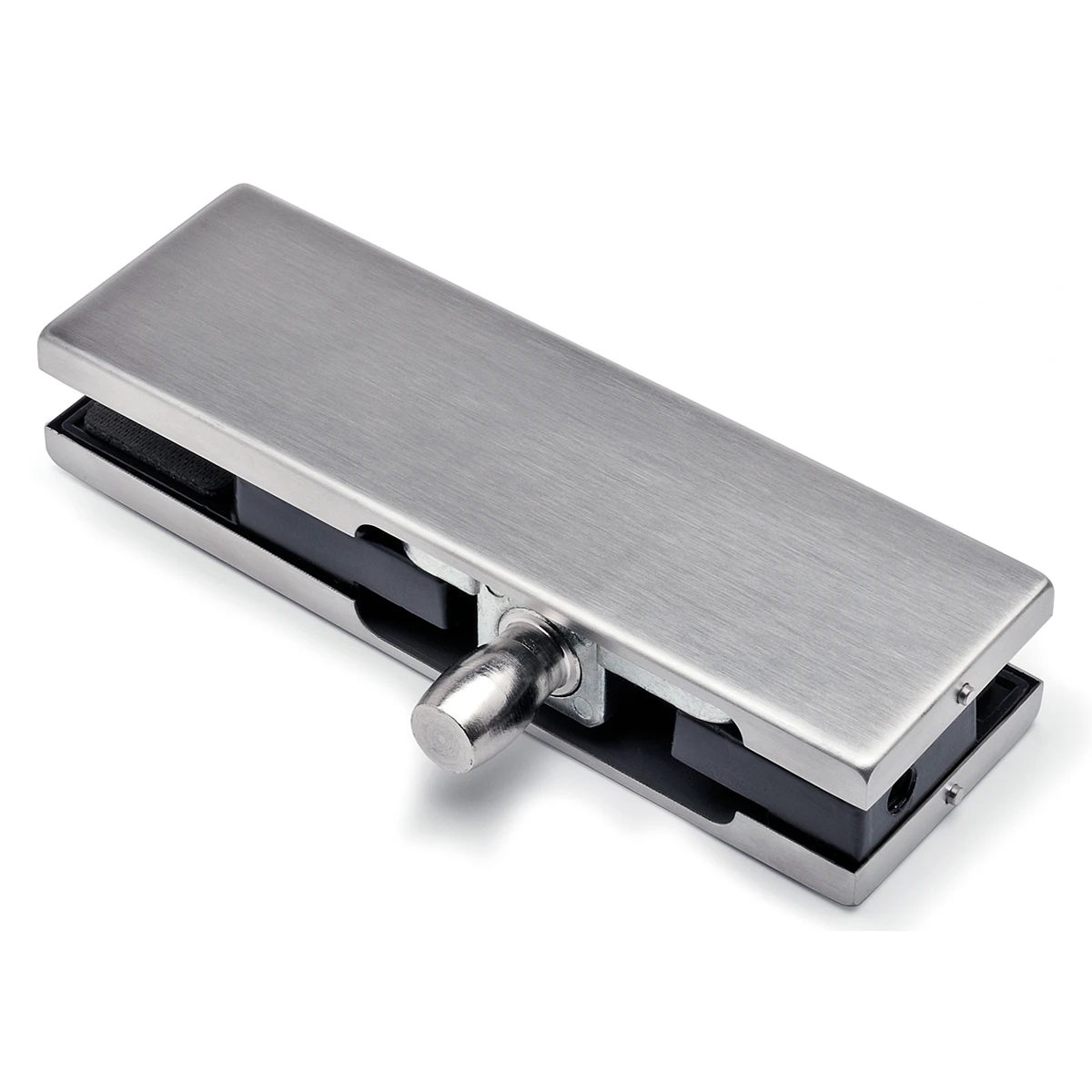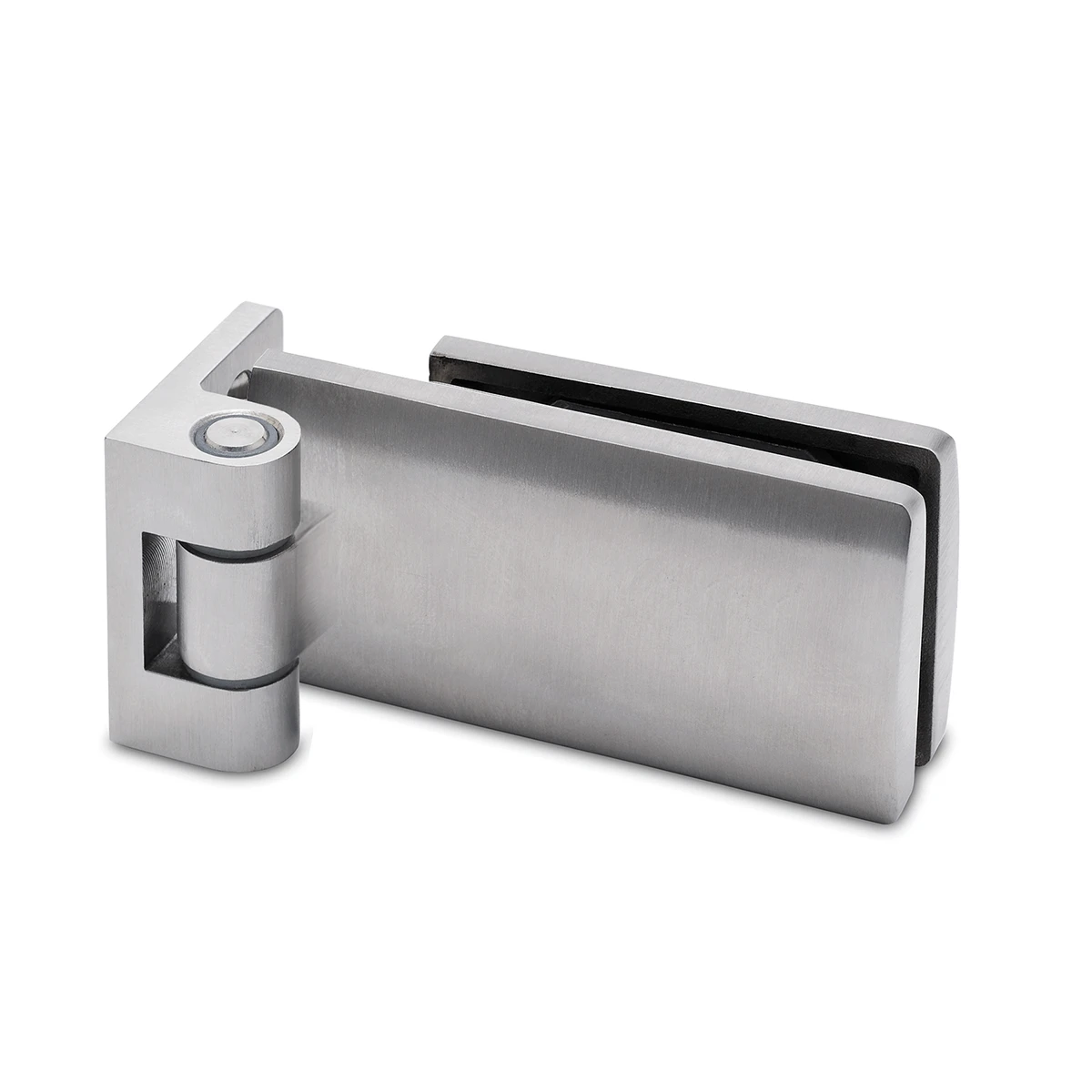Charnières
HINGES FOR GLASS DOORS
Hinges are mechanical devices that connect two fixed objects, such as a door and a door frame. They allow the door to rotate around an axis to be opened or closed. Hinges are typically made of metal and consist of two plates connected by a pin or an axis. There are different types of hinges, such as hinges with concealed, surface-mount, or welded plates.
What types of door hinges are there?
There are various types of door hinges that can vary in their design, materials, and applications. Here are some common types of door hinges:
- Butt hinges: These are the most commonly used hinges for doors. They consist of two plates connected by a pin. Butt hinges are available in different sizes and materials and are suitable for a variety of applications.
- Piano or continuous hinges: These long, narrow hinges extend along the entire length of the door and allow for even weight distribution. They are often used on cabinet doors and lightweight partitions.
- Concealed hinges: These hinges are invisible when the door is closed as they are recessed into the door frame and edge. They are ideal for modern, minimalist designs, providing a clean, seamless look.
- T-hinges: These hinges have a "T" shape and are frequently used on gates and cabinet doors. They are sturdy and offer good stability.
- Overlay hinges: These hinges are primarily used on cabinet doors and are inset into the door, leaving only the pivot point visible. They allow for easy installation and adjustment of the door.
- Butterfly or bi-fold hinges: These decorative hinges have a shape reminiscent of butterfly wings and are commonly used on lightweight doors and cabinets.
- Pivot hinges: These hinges allow the door to rotate around a fixed point in the floor and header of the door frame. They are often used on heavy doors and glass doors.
- Soss hinges: Similar to concealed hinges, Soss hinges are invisible when the door is closed. Their design allows for nearly flush mounting of the door and frame.
There are many more types of door hinges, but these are some of the most common ones. Choosing the right hinges depends on factors such as door size, weight, material, and desired aesthetics.
Applications of Door Hinges
Door hinges are mechanical devices that enable a rotating connection between two fixed objects, such as doors and door frames. They are available in various sizes, materials, and designs to meet different requirements. Here are some applications of door hinges:
- Interior doors: Door hinges are used in residential and commercial buildings to attach interior doors to the door frames. They enable the opening and closing of doors and contribute to the stability and security of the doors.
- Exterior doors: Door hinges are also important for exterior doors as they provide durability against weather conditions and increased security. They are typically made of robust materials such as stainless steel or brass to prevent rust and corrosion.
- Cabinet doors: Door hinges are employed in kitchen, bathroom, and cabinet doors to provide easy access to the contents of the cabinet. They are available in concealed and non-concealed designs and can be customized to fit the specific cabinet door.
- Furniture doors: Door hinges are also used in furniture pieces such as cabinets, display cases, and other storage furniture. They enable the opening and closing of furniture doors and contribute to the functionality and aesthetics of the furniture piece.
- Vehicle doors: Door hinges are utilized in various vehicles such as cars, trucks, buses, and RVs. They enable the opening and closing of vehicle doors while providing security and stability.
- Fire doors: Door hinges for fire doors are designed to withstand high temperatures and restrict the spread of fire and smoke in case of a fire. These hinges must comply with the relevant fire safety regulations.
- Heavy-duty doors: In industrial and commercial environments, heavy-duty door hinges are often used to secure doors that need to withstand increased load and stress.
- Special applications: Door hinges are also employed in special applications such as refrigerator doors, ship doors, aircraft doors, and other unique situations where a rotating connection is required.
Overall, door hinges are an essential component for a wide range of applications where doors or movable parts need to be attached and moved.
What should I consider when choosing hinges?
When selecting hinges, you should consider the following factors:
- Material: Hinges are available in various materials such as brass, stainless steel, zinc, steel, and aluminum. Choose the material according to the application and the environment in which the hinge will be used. For example, stainless steel hinges are well-suited for outdoor use as they are corrosion-resistant.
- Size and shape: Hinges come in different sizes and shapes. Ensure that the hinge fits the size and weight of the door or furniture piece it will be attached to. Too small hinges may not bear the load and could break.
- Load capacity: The load capacity of a hinge is an important factor to consider. Make sure the chosen hinge can support the weight of the door or furniture piece.
- Mounting type: There are different mounting types for hinges, such as surface-mounted, mortise, or weld-on. Choose the mounting type that best suits your application and is the easiest to perform.
- Opening angle: The opening angle of a hinge indicates how far the door or furniture piece can be opened. Ensure that the opening angle is sufficient for your application.
- Features: Some hinges offer additional features, such as integrated damping that enables quiet and smooth door closing. Consider whether such features are beneficial for your application.
- Aesthetics: The appearance of the hinges should match the style of the door or furniture piece. You can choose from various finishes, colors, and shapes.
- Price: Consider the price-performance ratio when selecting hinges and ensure that the quality justifies the price.
- Manufacturer: Choose hinges from reputable manufacturers to ensure that you receive a high-quality product.
By considering these factors, you can select the right hinge for your application and ensure a durable and functional solution.













































